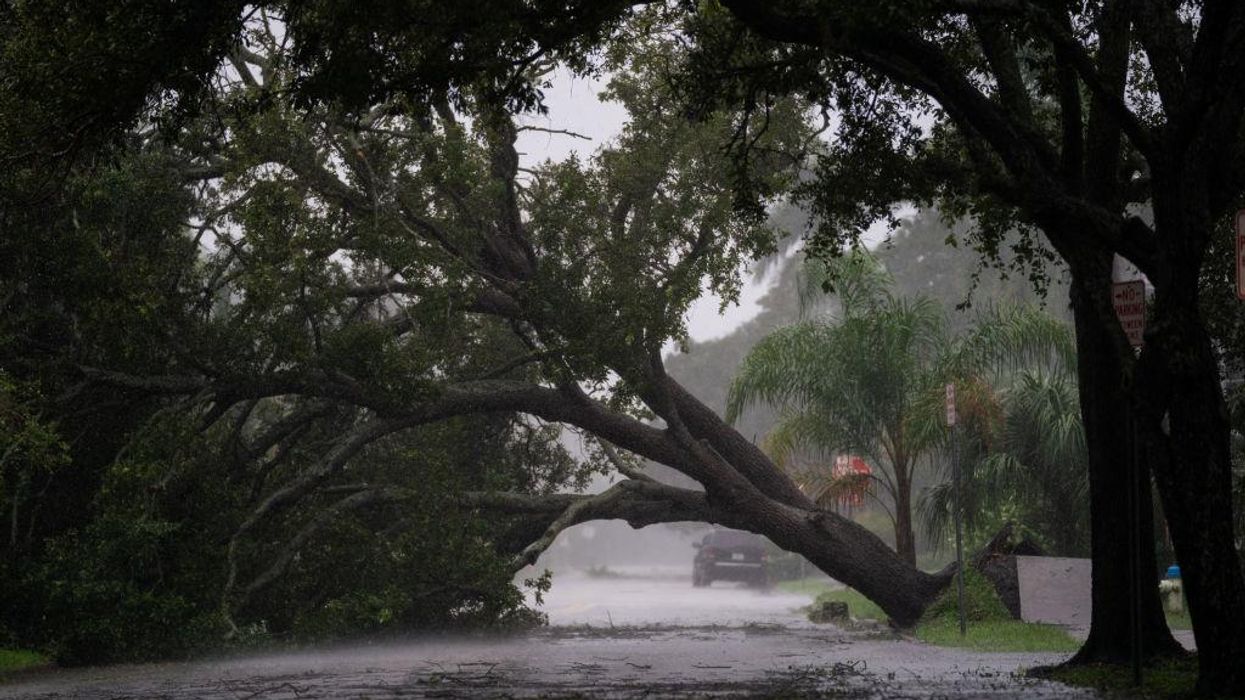
Photo by Sean Rayford/Getty Images

Early this morning, the National Hurricane Center downgraded Ian from a hurricane to a tropical storm. Although now regarded as a weaker force, the phenomenon is still expected to produce strong wings, heavy rains, and storm surge in Florida, Georgia, and the Carolinas.
As of 8 a.m. on September 29, the storm was moving northeastward at 8 mph, with maximum sustained winds at 65 mph. It is presently headed toward Orlando.
The NHC noted this morning that coastal water levels continue to subside along Florida's west coast, although the danger remains of a "life-threatening storm surge" Thursday through Friday along the coasts of northeast Florida, Georgia, and South Carolina.
The NHC indicated that tropical storm-force winds will likely spread northward across the aforementioned areas through Friday. Furthermore, "life-threatening catastrophic flooding" will continue today across central Florida.
Significant flooding will also occur in the state's northern portion, southeastern Georgia, and eastern South Carolina.
Ian, reportedly the fourth-strongest hurricane on record to make landfall in Florida, continues to trail a wake of ruination. It has left over 2.5 million in the dark. Hundreds are feared dead.
Lee County Sheriff Carmine Marceno told "Good Morning America" on Thursday, "I definitely know the fatalities are in the hundreds," indicating that there are also thousands of people waiting to be rescued.
The Category 4 hurricane slammed southwestern Florida on Wednesday with 150 mph winds and a powerful storm surge.
The storm's center came ashore roughly 100 miles south of Tampa, which was last directly hit by a hurricane in 1921.
Extreme Debris Filled Winds, Placida, Florida - Hurricane Ian - 9/28/2022youtu.be
Fierce winds transformed debris into potentially lethal projectiles, while the surge towered over previous heights, flooding massive swaths of land and carrying away entire homes.
In Fort Myers, the storm surge was 5.8 feet, 2.44 feet higher than in 2001 with Hurricane Gabrielle. The surge on Fort Myers Beach was strong enough to sweep away the Lee County sheriff's office temporary outreach center trailer.
Elsewhere along the southwest Florida coastline, from Englewood to Bonita Beach, the surge was reportedly 8 to 10 feet above ground level, accompanied by "destructive waves."
The lower-level emergency room was flooded in the Fawcett Memorial Hospital in Port Charlotte, Florida, while winds reportedly peeled back the roof on its intensive care unit. Footage captured by Christopher Shannon shows some of the damage. He noted that the storm "clobbered" the area.
\u201cInundaci\u00f3n en el Hospital HCA Florida Fawcett en Port Charlotte por el paso del Hurac\u00e1n Ian. \n\n#MoluscoNews \n#ElMolu\ud83c\udfa7 \n\n(\ud83c\udfa5 Christopher Shannon - FB)\u201d— Molusco (@Molusco) 1664446175
Gov. Ron DeSantis (R) noted that some people remain in high-risk evacuation zones. Their calls have been logged, and there will be a response, he noted, although first responders will wait for the storm to move enough for rescue efforts to proceed safely.
\u201cHurricane Ian left a path of destruction in southwest Florida, trapping people in homes, flooding streets and buildings, and knocking out power across the region.\n\nThe storm is one of the strongest hurricanes to ever hit the United States. https://t.co/RuksxwL7f8\u201d— The Associated Press (@The Associated Press) 1664452380
According to Collier County officials, the roads in Naples, Florida, are impassable due to high water and tides.
\u201cInsane video shows just how deep the water is in Naples, Florida from #HurricaneIan. \n\nThe Naples Fire Rescue crew grabbing their gear as flash flooding submerged ambulances and firetrucks in feet of water.\u201d— FOX Weather (@FOX Weather) 1664398814
While their own facility has been thoroughly flooded, Naples Fire-Rescue nevertheless continues to aid those in desperate need of help.
Parts of Kissimmee, south of Orlando, similarly saw major flooding last night.
\u201cHoly cow. Major flooding in Kissimmee. @WFTV #Ian\u201d— Nick Papantonis WFTV (@Nick Papantonis WFTV) 1664435606
Extra to lives, homes, and memories lost in the floods and winds, the economic cost of the damage may also be significant. The estimated reconstruction cost will be $258.3 billion. The insurance industry stands to lose between $20 billion and $40 billion.